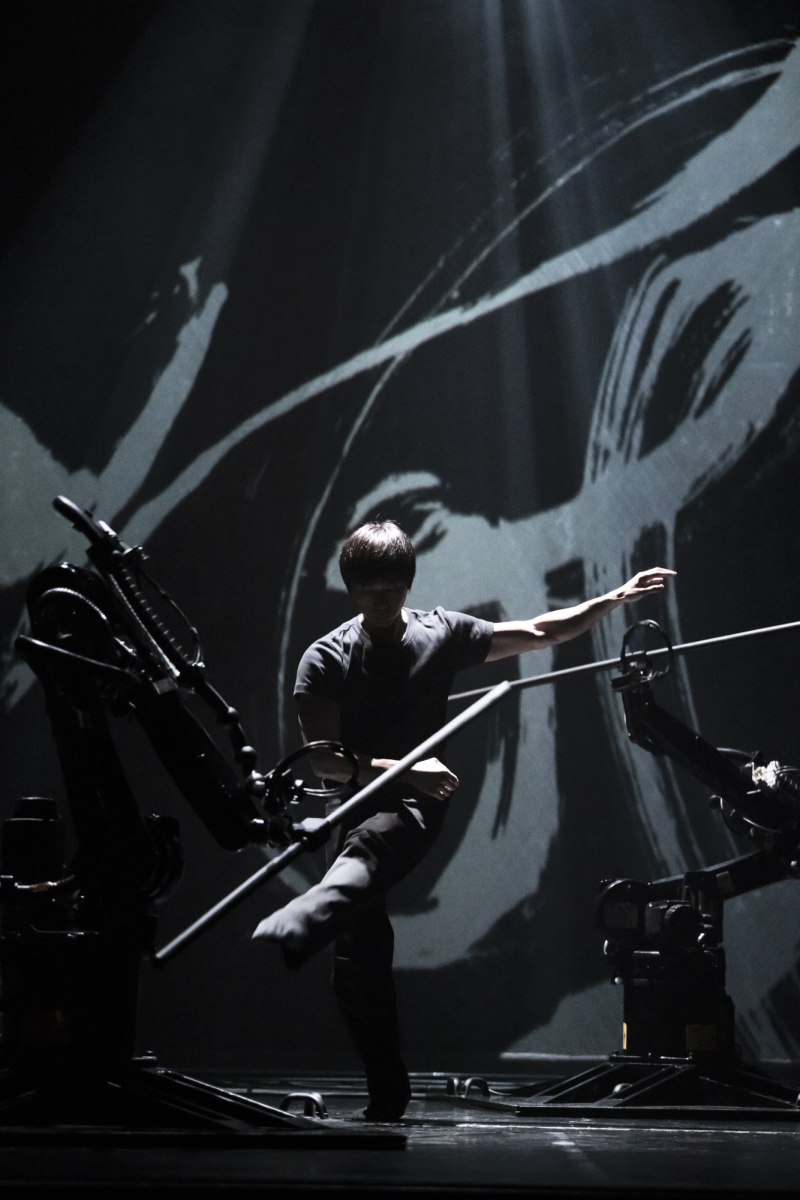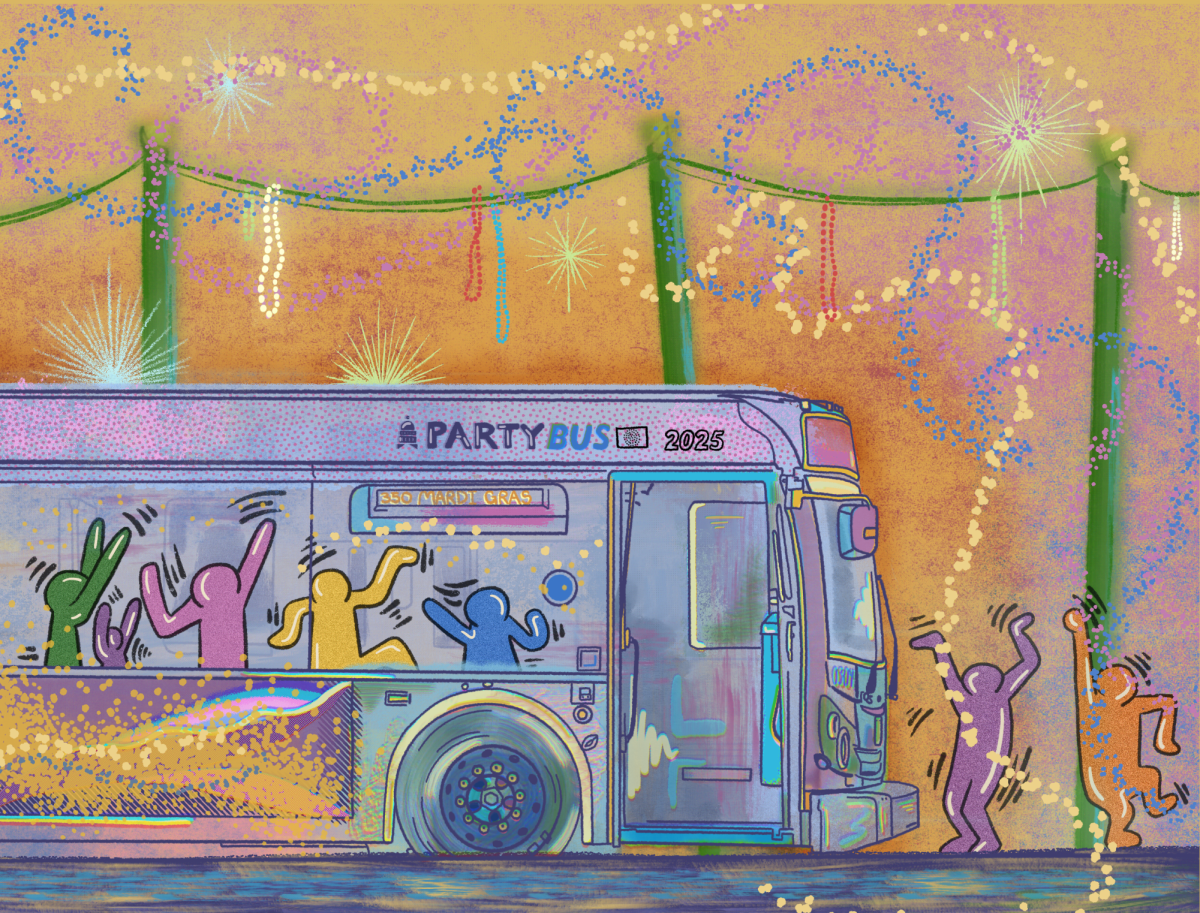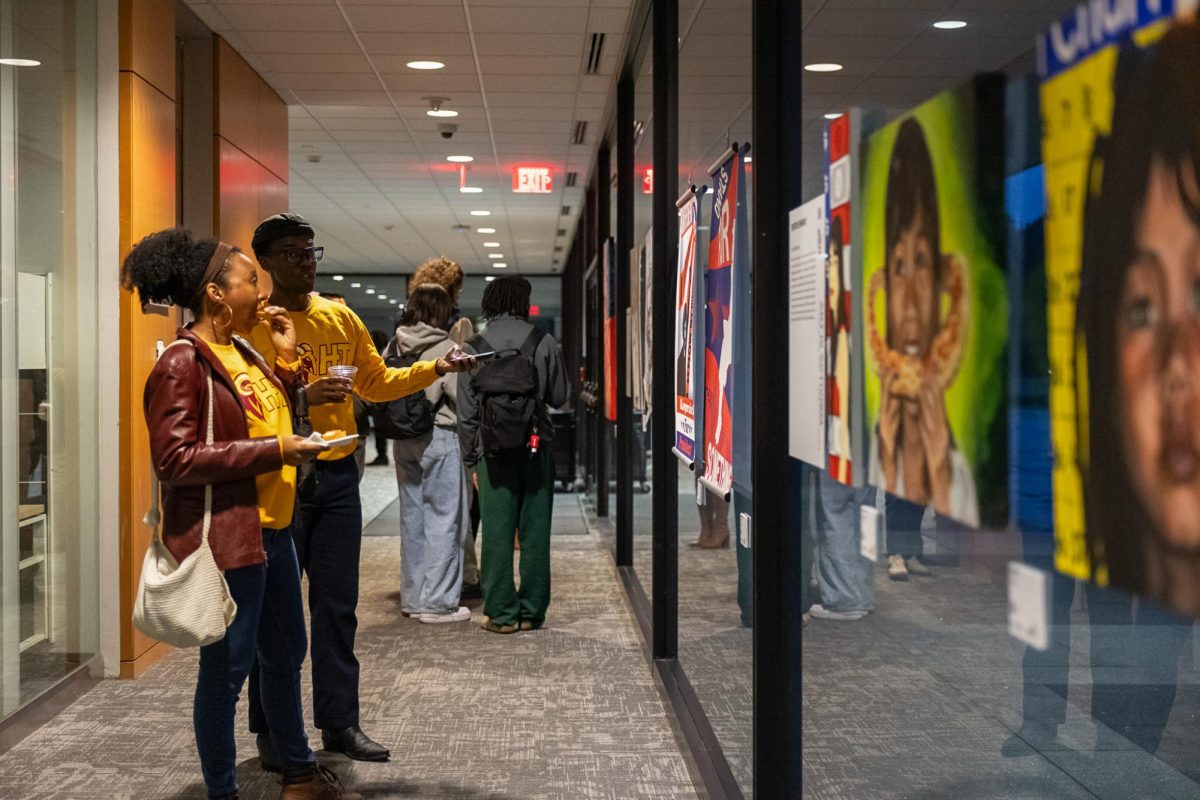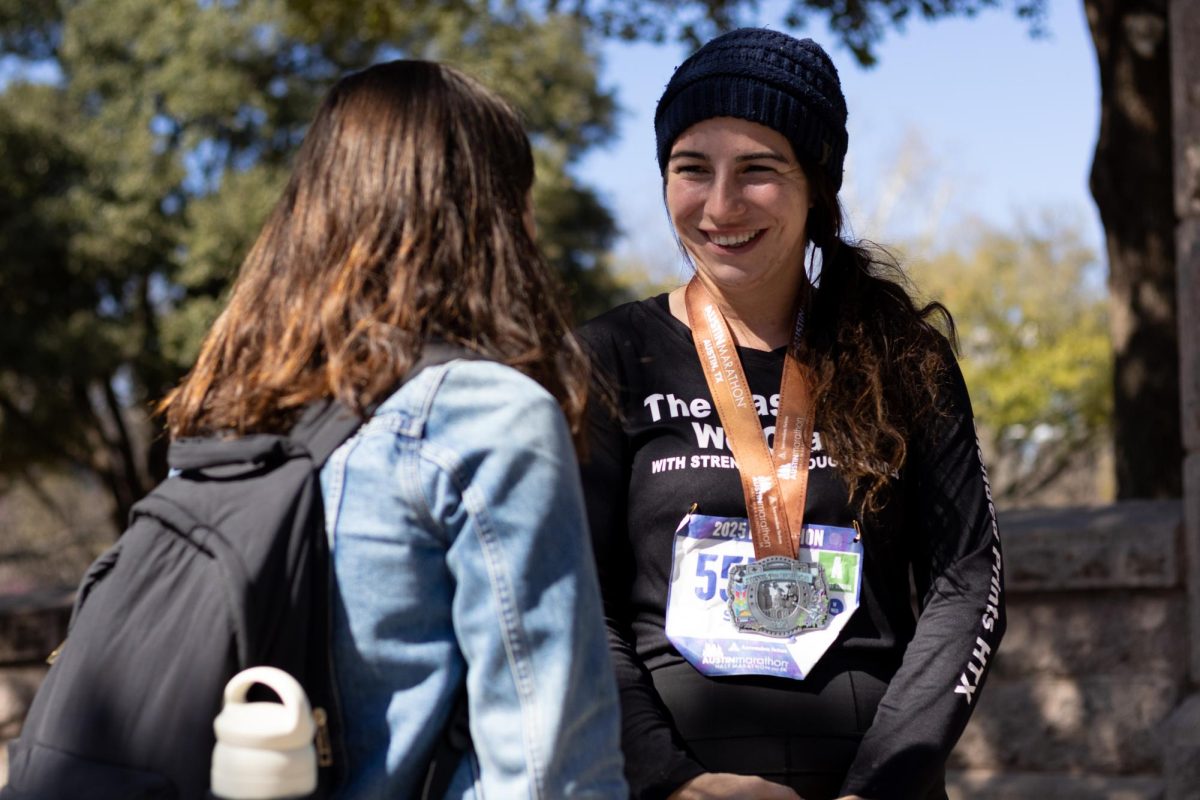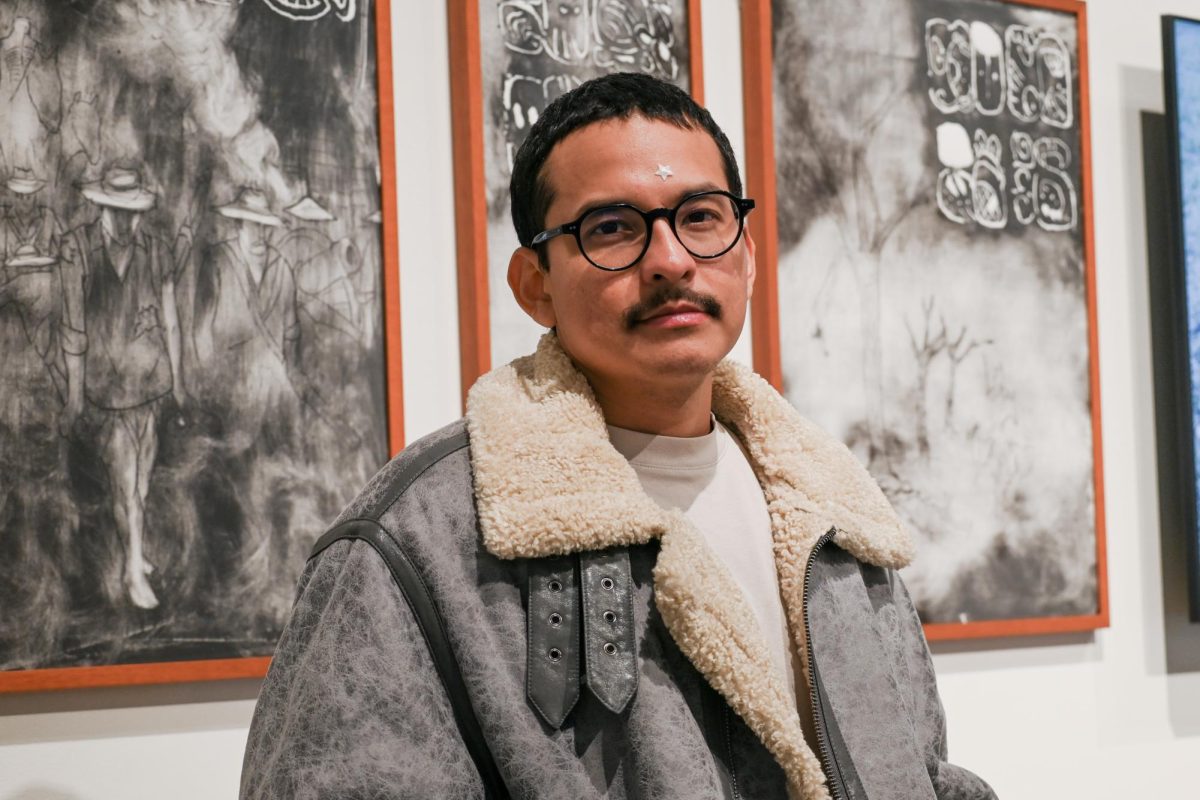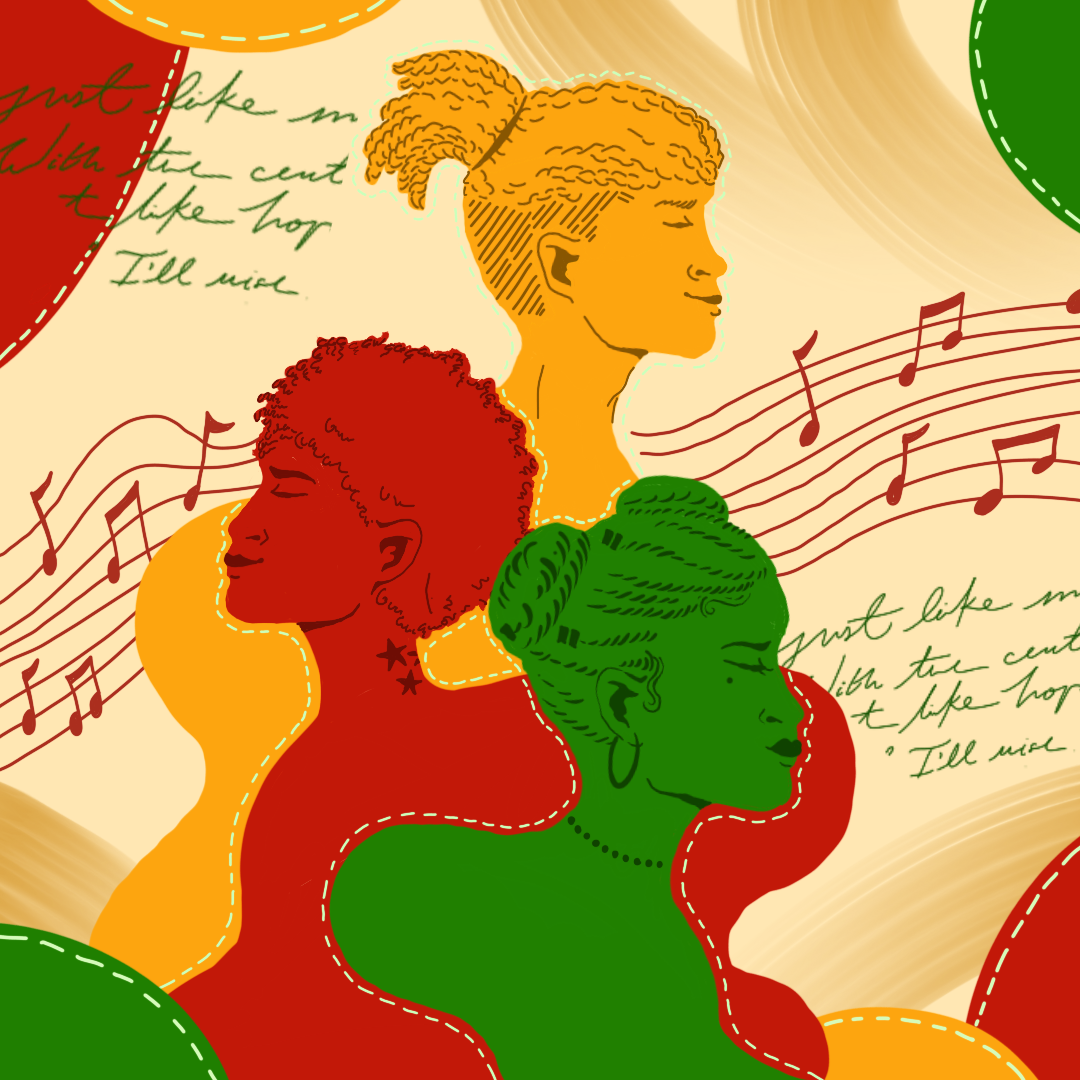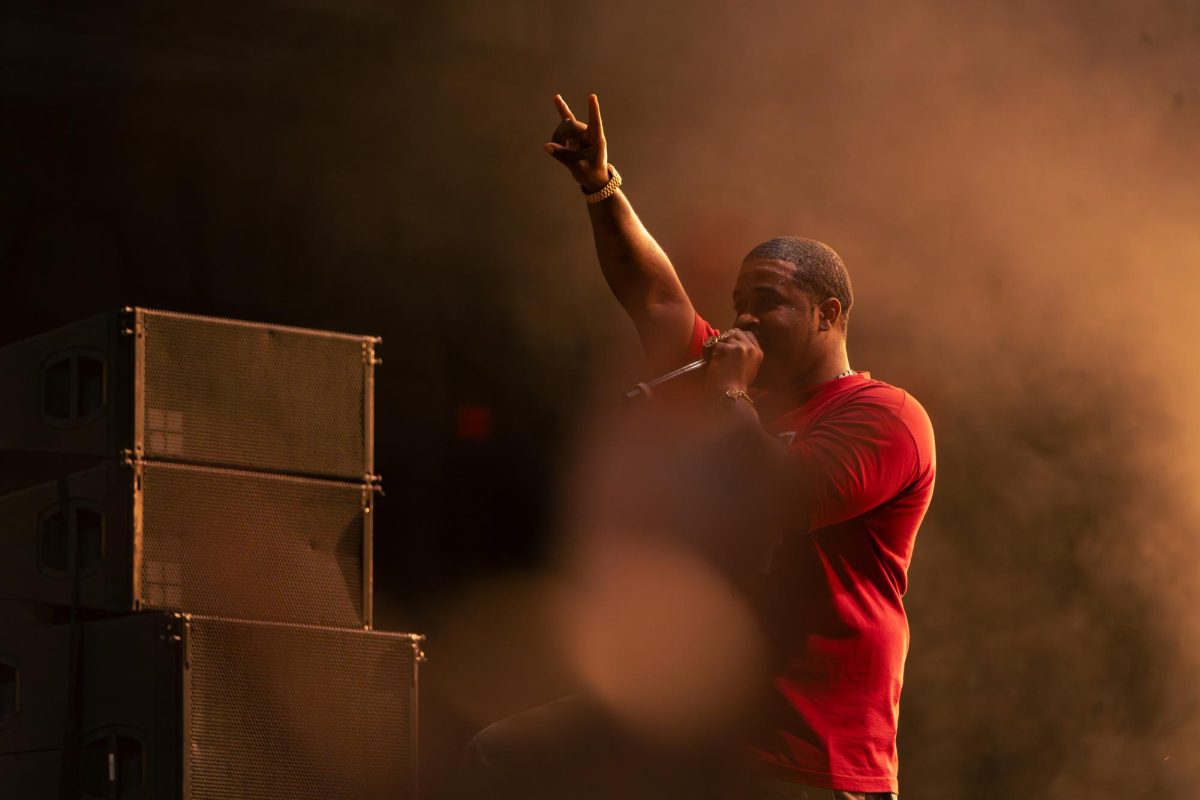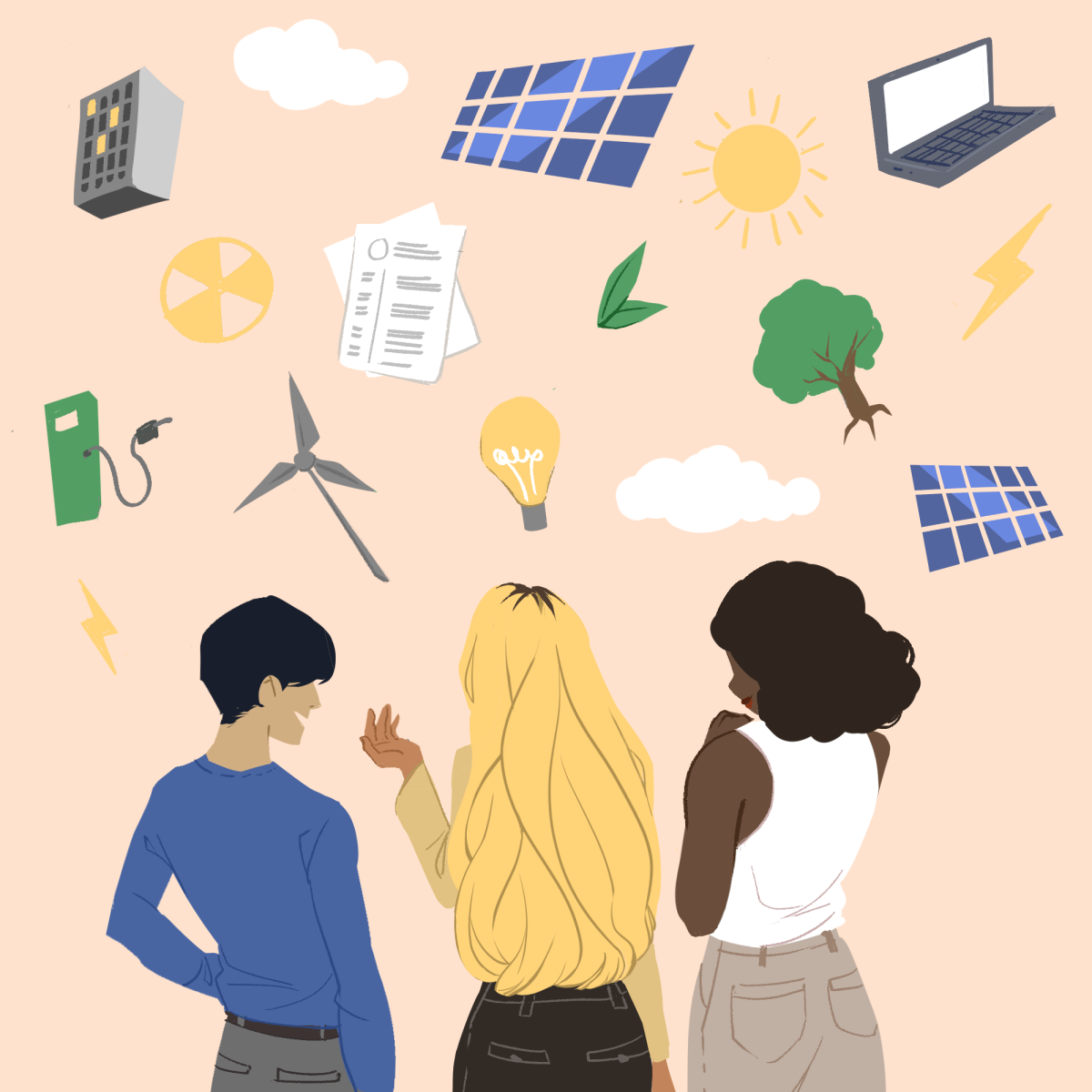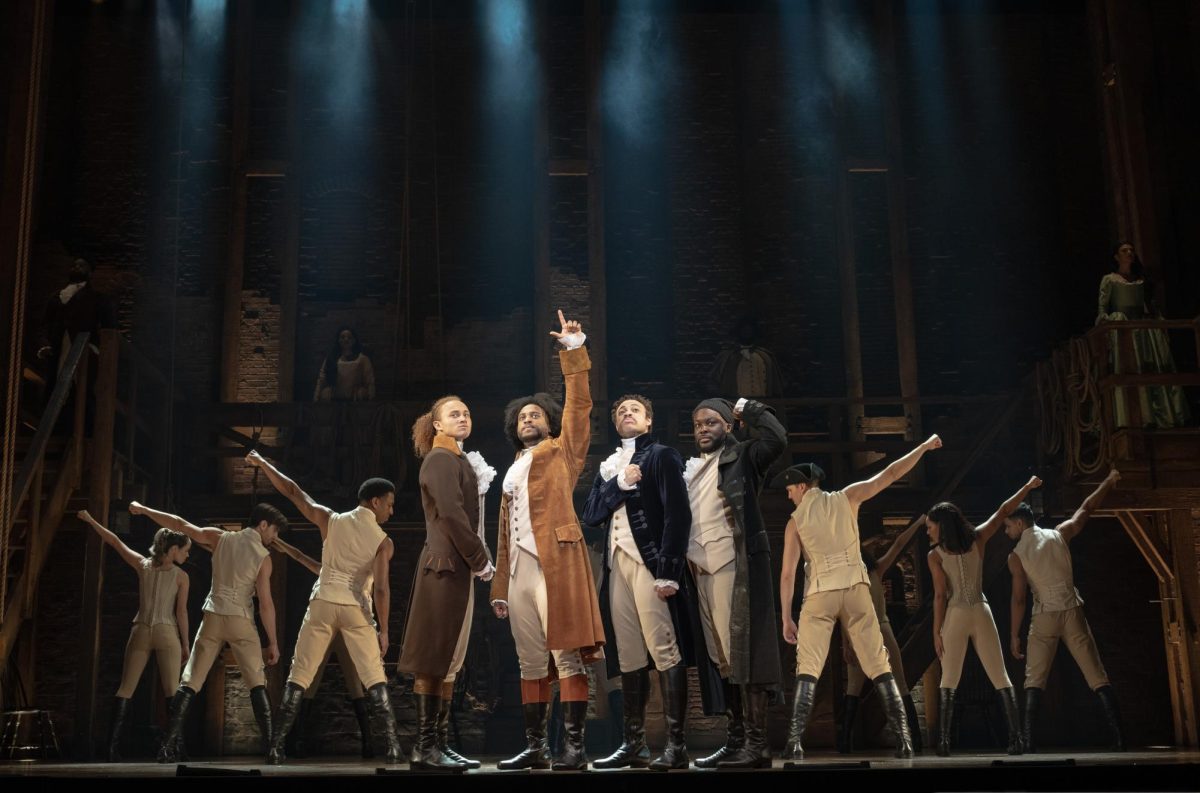Dancers moved in fluid synchronization as if brushes on a canvas.
Impressive holograms of inky visuals encompassed them, moving in unison with movements that mimicked ancient calligraphy. Critically-acclaimed Taiwanese dancer, choreographer and inventor Huang Yi performed his technology-art hybrid spectacle “Ink” and pushed the limits of dance beyond human expression at Bass Concert Hall on Nov. 7.
Incorporating artwork from a renowned Taiwanese calligraphy artist, Yi and audio-visual artist Ryoichi Kurokawa used dance, programming and high-tech visual effects to create a performance like no other, which first premiered in June 2023. Ink visiting Texas Performing Arts facilitated a rich cultural exchange between Taiwan’s Ministry of Culture and UT.
“Technology (has) advanced, (at) an astonishing state,” Yi said through a translator. “(I’m) looking forward to different robots with different, even more advanced abilities … not only (displaying) but being a part of the creative process.”
Yi’s parents immersed him in both art and technology at a young age. Despite financial struggles, they bought Yi a computer — a resource he didn’t let go to waste. He also spent a lot of time in his parent’s dance studio where they taught tango. There, he learned to paint with his father.
“Further along this career, technology is the one thing that (I) wanted to incorporate into (my) practice,” Yi said.
His blending of choreography and inventorship led to Dance Magazine naming him as one of the “25 to Watch,” which gave Yi more fuel for proving his prolific nature through “Ink.”
“The nomination means a lot (to me), and (I’m) appreciative of (it),” Yi said. “(I) wanted to utilize this work to (show that).”
In addition to audio and visual elements, Yi incorporated his fascination with technology by dancing alongside an industrial robot he programmed. Yi said he wants to close the perceived distance between human and machine movement.
“For (me), working with a robotic dancer and human dancer, there’s not too much of a difference,” Yi said.
Environmental engineering sophomores Kavya Shah and Julia Gancayco went to see “Ink” on Thursday. Gancayco said even though the idea initially sounded strange, she enjoyed watching the dancers perform alongside the robot the most.
“The robots don’t move like robots,” Shah said. “They moved a lot more like humans than usual.”
While impressed by the skill of the dancers, the technological aspects stood out, Shah said.
“The entire time, (Gancayco and I) kept thinking about all the coding that would have to go into that performance,” Shah said.
Yi said he wants people of all nationalities and ages to connect with Taiwanese artforms and also open their minds to using technology and art to express ideas in modern ways.
“Artists will have more tools to create things that (are) more engaging and … a little bit more thought-provoking,” Yi said. “(Mixing technology and art could cause) the audience to actually think about what the future can bring.”

